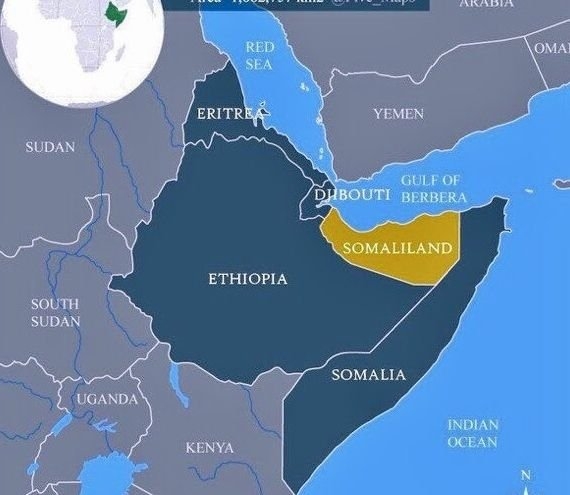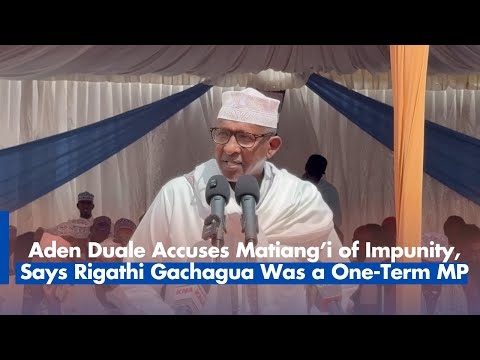When Fardosa Osman received an invitation to attend a family planning event that was to be held at Bomas, she did not give it much weight at first.
Osman who was the Garissa County First Lady then, even wondered what she had to do with a family planning (FP) event in the first place.
Coming from Garissa, the use of contraceptives was very low then because of religious beliefs that God wants big families and contraceptives are forbidden.
In Garissa County, FP was never a priority and it is not given any importance by most policymakers.
“I was not sure what I would meet, hear and see but I had to drag myself and go to Bomas,” she says.
It was while at Bomas that her perspective began to change, watching what her fellow First Ladies were doing in their counties made her have the zeal to drive the family planning agenda in her own county.
By the time she was leaving Bomas, she had made up her mind to do a replica of what she had seen and heard in her own county.
But the problem was how to go about it. She had to come up with strategies that would ensure the message was well received without the messenger getting stoned by her community.
“Because of the cultural belief that is associated with FP and it is perceived that you are limiting people to have one or two children so it actually got me thinking to be very strategic,” Osman says.
“Family planning is not a word that you can mention in the county, so my first strategy was to change the word from family planning to child spacing,” she adds.
The word was well received as it speaks within the Quran and hence speaks well to the people in her county.
In her quest to ensure the FP agenda bears fruits, Osman knew the plan’s success also depended heavily on the involvement of men from within the community.
Male involvement was important as the majority of them in the county were not accepting family planning issues yet they are the gatekeepers.
Osman had to involve them in her advocacy and make sure they were at the forefront of her campaigns and were supporting the women in the community.
Despite the deeply entrenched patriarchal nature of the society, the county has witnessed a commendable surge in male involvement in postpartum family planning (PPFP).
Before the implementation of this strategy, data showed that 47 per cent of husbands and partners were uninformed about contraception.
“The other strategy I used for my project to be successful and amplify women's voices in Garissa was also through the Sheikhs, the imams, and the chiefs. We call them the community gatekeepers and the chiefs who are very strongly listened to by the community,” she noted.
“Within Garissa, we had low male involvement. It was extremely very low so it has helped me amply FP services in Garissa County,” she adds.
Through her Fountain of Hope Initiatives, family planning uptake in the county has more than doubled, climbing from six per cent (KDHS 2014) to 11 per cent (KDHS 2022).
According to the Kenya Demographic Health Survey 2022, Garissa’s total fertility rate (number of children per woman) stands at 5.3 per cent against the national rate of 3.4 per cent.
The data shows that the use of modern methods of FP among married women aged 15 to 49 stood at 11 per cent while the unmet need for FP among married women within the same age bracket stands at 10 per cent.
The demand for FP satisfied by modern methods within the same age bracket is estimated to be at 50 per cent.
The has now endorsed a PPFP circular that directs all facility heads and medical superintendents to enhance the provision of post-partum family planning (PPFP) services promptly.
This is a boost to the integration of post-partum family planning services into routine maternal and child healthcare, ensuring that family planning options are discussed and made available during post-natal check-ups and subsequent care visits.
But Osman is not done yet, her plan is to move the uptake from the current 11 to more than 20 per cent.
She wants to move her advocacy beyond talking on behalf of women in Garissa to all women in all the counties in North Eastern. All she wants is to make a difference.
She feels that political leaders too should be brought to the table as they sometimes pose as a challenge to the family planning agenda.
During the election season, some of them can be heard telling their constituents to have more child births which Osman says is an impediment in the family planning advocacy agenda.
“I am speaking on behalf of Garissa but I want to speak on behalf of the northern counties. I want to challenge myself and make sure I have made a difference. I am there and I am ready to work,” Osman says.
Bury pills in the soil
A healthcare worker who works at Garissa County Referral Hospital and who interacts with some of the women says a higher percentage of men do not accept FP.
In the county, women's roles are limited to childbearing and taking care of their children at home.
“A woman found using FP against the husband's wish is punished, threatened with divorce and the husband may end up marrying another wife,” he says.
As a result, women are forced to devise other means of concealing their family planning pills.
“Women who use any FP method have to do it secretly without the husband's knowledge. Some narrate that they even bury pills in the soil where the husband can't know/reach,” he says.
The Director General for the National Council for Population and Development (NCPD) Mohamed Sheikh has acknowledged that family planning uptake in the country varies from county to county.
Counties in the northeastern part of the country are yet to fully embrace family planning due to religious factors and traditional beliefs.
The uptake is also low in Samburu, West Pokot counties as well as part of Kwale County.
He recommends that women who have given birth take a spacing of at least two years before getting pregnant again for the sake of their health and that of their child.
“Family planning is not about controlling the number of children but about spacing. We would like to advise women that they should use any method either traditional or modern to space their children,” he says.
Head of the Maternal and Reproductive Health Division at the Ministry of Health Edward Serem has emphasised that the constitution guarantees that every woman has a right to get the best attainable standards including reproductive health.
This means both men and women in the country should have access to several family planning options.
Serem encourages women to use longer working methods such as the implant and coil which are effective for at least three years as compared to three-month injections which he says are economically expensive.
“Three months injection is economically expensive. Men should go for vasectomy if they feel they have enough children,” Serem notes.














